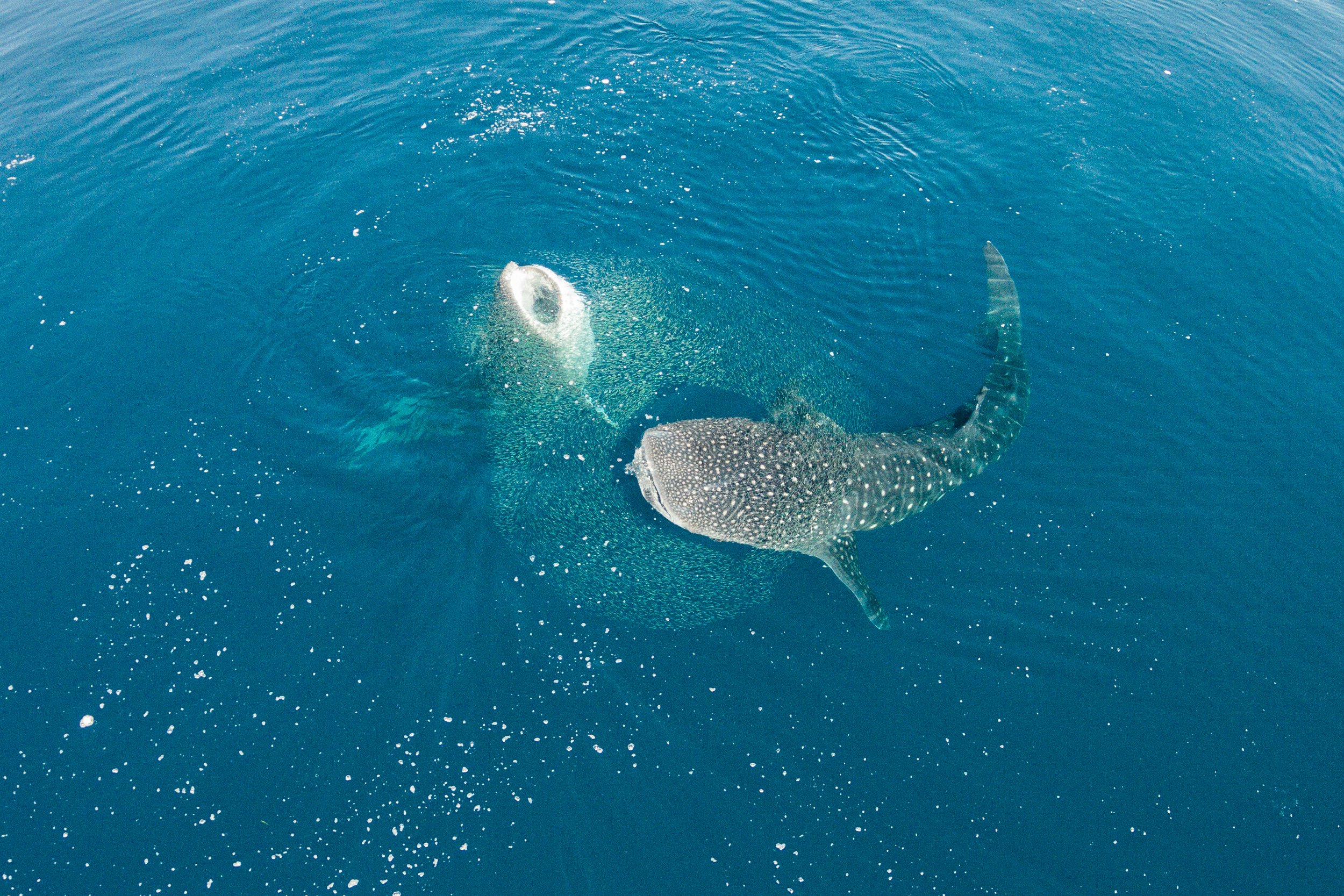< back
Meet Ali the
Whale Shark
Ali is a 20ft (6m) juvenile female whale shark that MMF has been tracking since December 2021. She's wearing a satellite tag on her fin and has so far travelled over 6,000 miles around the Coral Sea. Ali’s movements show that this newly-discovered whale shark population likes to swim north to Papua New Guinea to feed. MMF is grateful for the new insight she has brought to their studies of whale sharks.
Explore the sections below to discover more about Ali’s habitat and MMF’s groundbreaking work to protect whale sharks.
Great Barrier Reef
Gateway to Whale Shark Aggregations
The Great Barrier Reef Whale Shark Project is largely focused on finding places where whale sharks come together in groups. Because whale sharks are mostly a solitary species, they have garnered a deserved reputation for being very difficult to find. Up until the 1980s, there had only been a few hundred sightings of whale sharks around the world, so it is especially important to protect places that bring together many sharks, such as reproductive sites or areas with lots of food. The Great Barrier Reef is one of the latest such hotspots for whale sharks.
Using cutting-edge tech to pinpoint whale shark hotspots
The Great Barrier Reef Project is an exploratory program focused on identifying the makeup of the whale shark population, determining what they are doing there, and figuring out the major threats they face. By using satellite-linked tags to track their movements, MMF can then use the animals themselves to discover additional hotspots and high-use migratory corridors.
A small clamp-mounted satellite tag is attached to the very top of Ali’s dorsal fin. The way, every time Ali’s fin pops out of the water, the tag can ping her exact location!
Whale sharks feed at the surface, so if researchers find many pings in the same area, this can indicate a probable feeding aggregation site.
Identifying waters to safeguard
Whale sharks like Ali have proven to be especially helpful in this regard. MMF has been tracking Ali since December 2021, making her one of the longest tracks ever. Through her movements, MMF has determined that Papua New Guinea is another important hotspot too. Identifying hotspots is crucial to the conservation efforts because protecting these areas will have a disproportionately positive impact on the recovery of the population at large.
MMF has tracked Ali since 2021, and she was most recently spotted on November 30, 2023. The concentration of satellite pings suggests there are many whale sharks feeding here, which gives MMF a conservation focus area to explore.
A pair of whale sharks aggregate at the surface to feed. Whale sharks rise to the ocean’s surface where they can use their huge mouths to suck up food, including tiny plankton, small fish and krill.








